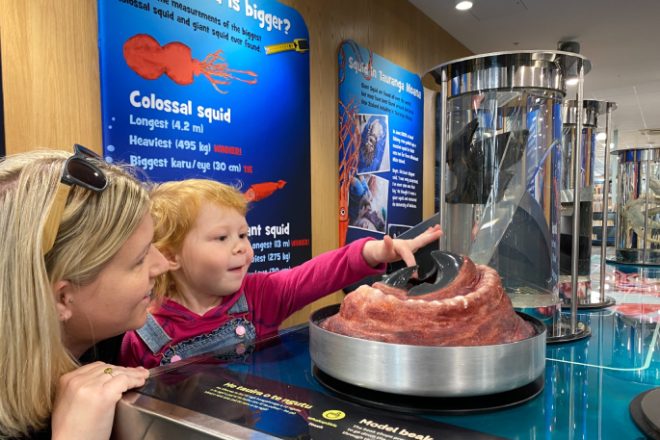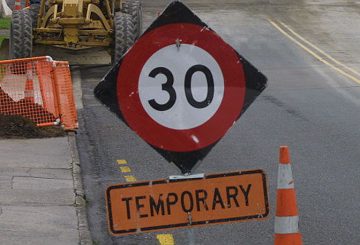The ‘Colossal Squid: Freaky Features! Te Ngū Tipua: Ngā Wāhanga Weriweri!’ exhibition is now open to the public at the Te Ao Mārama – Tauranga Library until Thursday, June 27. This eye-catching exhibition is a result of a first-time collaboration between the Tauranga City Libraries, Tauranga Museum, and Te Papa, according to Daniel Petersen, the creative and marketing coordinator at Tauranga City Libraries.
Visitors to the exhibition are invited to explore an interactive table showcasing parts of a colossal squid, including the lens from its eye, a piece of a tentacle, and a complete tiny squid. There are also rotating models of a colossal squid’s tentacle hook and beak, and visitors can compare their size to these massive creatures.
Colossal squids are mysterious creatures, living in extreme depths and freezing water, making them difficult to study. The first scientific report of a colossal squid was only made in 1925, when parts were found in the stomach of a sperm whale. Since then, only a few adult colossal squids have been recorded, and only four have been found complete.
Most of the collected specimens are smaller parts found in the stomachs of whales, sharks, and scavenging birds like the albatross. Despite their enormous size and strange features, it’s the lack of information about these creatures that makes them particularly intriguing. The colossal squid has captivated the curiosity of people around the world for generations.
Daniel encourages everyone not to miss this unique opportunity to see parts of the colossal squid up close, thanks to the remarkable specimens on loan from Te Papa.





















































-660x440.jpg)